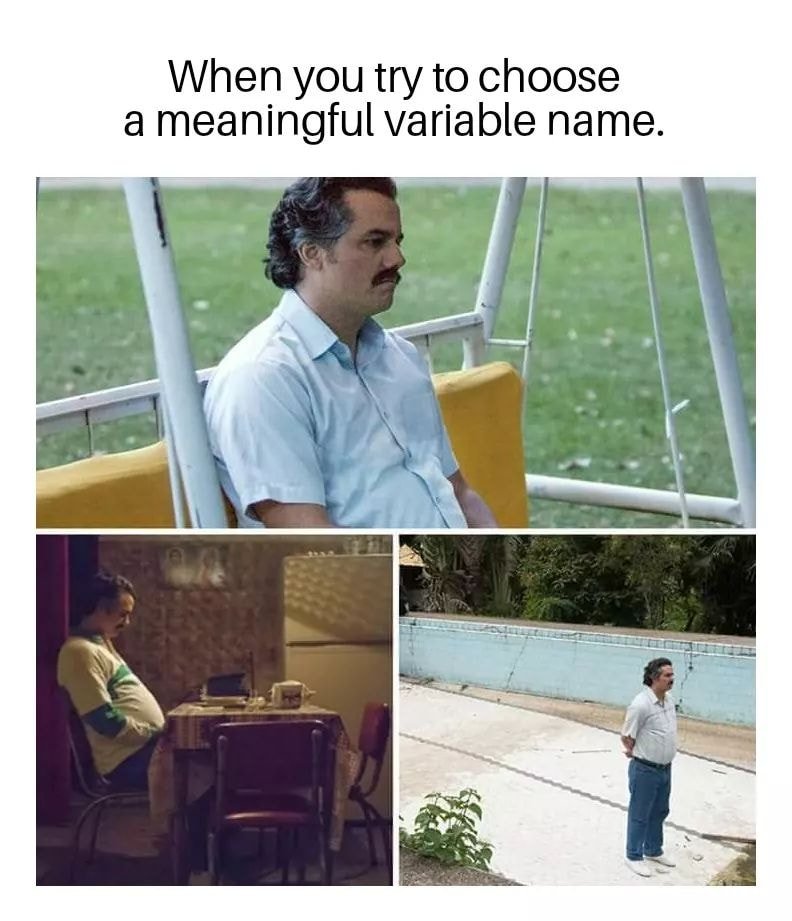Refactor: Solving a Pesky Naming Problem
Back in February, I wrote a post about a refactor to this app that made use of a factory-style class for some nifty data construction. Recently, I’ve found myself being bothered by a couple of things in that refactor, so thought I’d take a crack at making it better.
My List of Things to Address
1. My controller still knows too much
Here in the controller, the show action does a lot of asking around and building of data before it can get down to the business of delivering data to the show.html.erb view.
# app/controllers/readings_controller.rb
class ReadingsController < ApplicationController
...
def show
positions = @reading.positions.order(:position_number).to_a
cards = CardFactory.build_cards(positions.count)
@positioned_cards = positions.zip(cards)
end
...
end
2. The name of my factory doesn’t seem quite right
The model that produces a modified, view-ready Card object is called a CardFactory. That’s not accurate because it’s instantiating card-like objects, not actual Card objects and not CardFactory objects. Hmmm.
# app/models/card_factory.rb
class CardFactory
def initialize(card, name, theme, keywords, orientation)
@card = card
@name = name
@theme = theme
@keywords = keywords
@orientation = orientation
end
In addition, the end goal of this class is to provide the controller with a set of card-like objects when what the controller really needs is a set of data with card-like objects matched up to reading position objects:
# app/controllers/readings_controller.rb
class ReadingsController < ApplicationController
...
def show
# This is what I really want:
@positioned_cards = [array-of-cards+positions]
end
...
end
I think I’m asking too much of the wrong things from a model with this name.
3. My tests are hard to write
As I was writing my it statements for this class, I found myself being confused about my expectations for its purpose.
describe 'a valid card factory' do
context 'when has valid params' do
# But why does a 'factory' object need to be valid?
# I actually need a card-like object to be valid.
...
describe '.build_cards' do
it 'returns an array of card factory objects' do
# But I actually want an array of card-like objects,
# not an array of factories.
...
And that’s what pretty much sealed the deal. So, according to my husband, I spent some time doing this:
And then I set out to refactor this thing.
The Refactor
The CardFactory name was bothering me, not because I needed a better name, but because the thing I was trying to name was confused about its purpose. During a conversation with my mentor, we realized that it needed to be two different models. So the CardFactory model ended up diverging into a ReadingCard model and a ReadingCardSet model, each with a more job-specific name.
A ReadingCard will generate that card-like object I’ve been wanting and that’s all it does.
# app/models/reading_card.rb
class ReadingCard
# Now I can logically validate these objects and test for validation
include ActiveModel::Validations
attr_reader :card, :name, :theme, :keywords, :orientation
# Bonus refactor: the copious arguments required are now
# delivered via keywords for accuracy instead of as
# fixed-position arguments
def initialize(card:, name:, theme:, keywords:, orientation:)
@card = card
@name = name
@theme = theme
@keywords = keywords
@orientation = orientation
end
delegate :id, :image_file, :arcana_id, :suit_id, to: :card
validates :card, :name, :theme, :keywords, :orientation, presence: true
def reversed?
@orientation == 'reverse'
end
end
A ReadingCardSet decides how many ReadingCards are needed for a Reading and it knows how to align ReadingCard data with ReadingPosition data. It puts all of this together and delivers a single set of data for the ReadingsController to consume.
# app/models/reading_card_set.rb
class ReadingCardSet
# All of this logic used to live in the 'ReadingsController#show'
def self.build_set(reading)
# The responsibility of knowing how to `order` positions is now
# in the ReadingPositions model
positions = reading.positions.ordered.to_a
reading_cards = self.build_cards(positions.count)
positions.zip(reading_cards)
end
private
def self.build_cards(qty)
cards = Card.all.sample(qty)
orientation_options = ['reverse', 'upright']
reading_cards = []
cards.each do |card|
orientation = orientation_options.sample
built_theme = card.send("#{orientation}_theme")
built_keywords = card.send("#{orientation}_keywords")
built_name = orientation == 'upright' ? card.name : "Reversed #{card.name}"
built_card = ReadingCard.new(
card: card,
name: built_name,
theme: built_theme,
keywords: built_keywords,
orientation: orientation
)
reading_cards << built_card if built_card.valid?
end
reading_cards
end
end
The ReadingsController is relieved of its duty to build that set and now simply gets to deliver the display data that’s been handed to it.
# app/controllers/readings_controller.rb
class ReadingsController < ApplicationController
...
def show
@positioned_cards = ReadingCardSet.build_set(@reading)
end
...
end
And my tests finally make sense since these two new models now have clarity of purpose.
Future Improvements
I really like how this refactor has gone. However, I don’t love that the view still has to know the anatomy of the @positioned_cards array in order to display data correctly.
<!-- app/views/readings/show.html.erb -->
<!-- This loop has to know that 'position' comes first
and 'card' comes second in the array of pairs -->
<% @positioned_cards.each do |position, card| %>
<%= render 'positioned_card', position: position, card: card %>
<% end %>
I’ll address that in my next refactor session.
